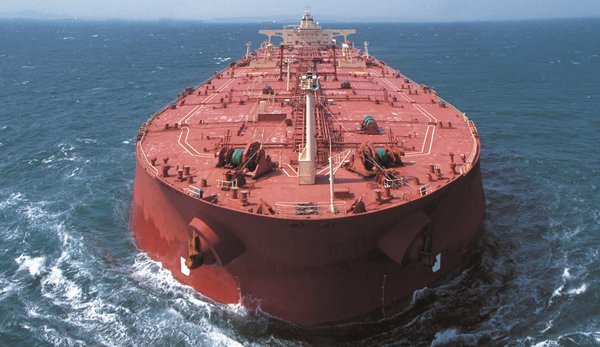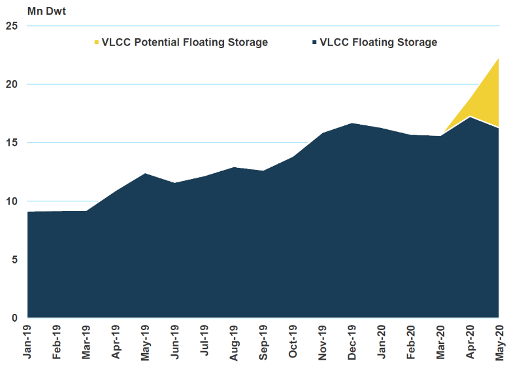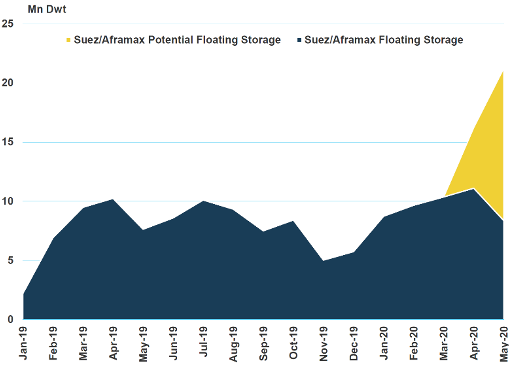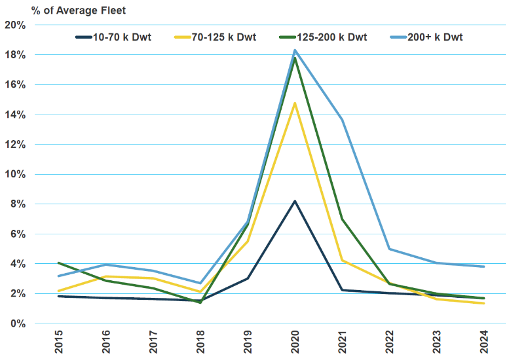Floating storage play is unwinding but effects are far from over

A recovery in oil demand and production cuts will see stocks drawn down, putting pressure on tanker earnings in the second half writes Tim Smith from Maritime Strategies International.
Floating storage, driven by low oil prices and contango futures, has dominated the supply-side story so far in 2020 and will continue to do so across the remainder of the year and into 2021.

Since March, at least 71 VLCCs have been booked with an option to store crude and in May, we estimated around 23 Mn Dwt of VLCC tonnage is being used for commercial floating storage, this equates to roughly 9% of the current VLCC fleet.
The unprecedented volumes of oil required to be stored on tankers have resulted in increased floating storage opportunities for smaller vessel classes too.
The number of Suezmax and Aframax vessels used for floating storage has rocketed in recent months. In May, we estimate Suezmax floating storage at ~8 Mn Dwt and Aframax floating storage at ~12 Mn Dwt, this translates to roughly 8.7% and 9.4% of their respective fleets.
Since March, at least 30 Suezmaxes and 25 Aframaxes have been booked for floating storage. We estimate floating storage will peak in July at 25 Mn Dwt for Suezmaxes and ~31 Mn Dwt for Aframaxes before falling to ~10 Mn Dwt and ~11 Mn Dwt respectively by the end of the year.

We believe oil demand should recover towards the end of the year as a degree of normality will return both for transportation and industry. As such refiners will begin to increase throughput and opt to purchase crude that is stored on floating storage enabling them to process the crude that will potentially be cheaper and faster to access depending on where it has been stored.
Although this analysis is based on tankers storing crude and fuel oil, it is important to note a large volume of refined products is also being storage on clean tankers. Since March, over 60 coated tankers have been chartered with an option to be used as floating storage.
Taking all of the above into consideration, in 2020 we expect 95 Mn Dwt to be omitted from the available fleet, which roughly equates to 15% of the tanker fleet in total. In 2021, we expect tonnage to total 50 Mn Dwt, roughly 8% of the fleet. The two largest fleet segments have a greater percentage of tonnage removed from the available fleet. This is predominately due to more floating storage opportunities available for larger vessels.

Although the removal of this tonnage will improve employment rates in 2020, it is only temporarily removed from the fleet and will return to active duty. By 2022, we expect the volume of tonnage in temporary commercial floating storage (also repair, maintenance, retrofit and other temporary removals) to fall to roughly 3% (17 Mn Dwt) of the 10+ k Dwt average fleet capacity.
We expect over 60 Mn Dwt (18%) to be removed from the combined VLCC and Suezmax fleet due to floating storage in 2020. Available fleet growth is expected to bounce back in 2021 with a yoy growth of 9.1% and remain strong at 8.3% in 2022, driven by the return of tonnage from to the active fleet from floating storage.
As oil production declines over the second half of 2020, demand is set to recover. We have seen strong increases in Chinese oil demand, whilst US demand has also increased significantly from lows earlier in Q2. As a result, the oil market is likely to transition from a huge surplus to a deficit across H2 20. The large volumes of onshore and floating storage built up in April/May will be drawn down, applying pressure to the market as oil prices recover.
The Q3 outlook for the tanker market will depend on the timing and extent of this transition, which is potentially under threat from second waves of Covid-19, but our view remains that earnings are going to come under significant pressure as import volumes are reduced. The declines in May and June so far corroborate our view on this, and lower earnings in Q3 and Q4 will translate into lower asset prices which have seen significant erosion in recent weeks.
